Remembering the strange but iconic Nintendo 64 controller
Read why the Nintendo 64 controller was both a product of and ahead of its time.
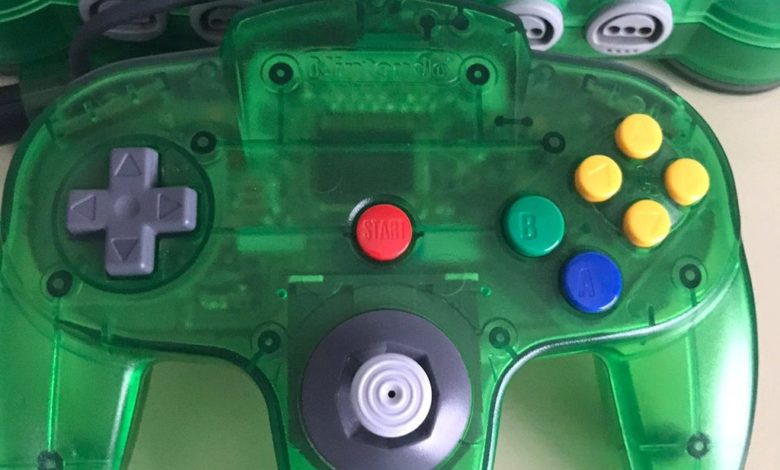
As gamers, we all remember the very first console we ever played on. Whether it was the SEGA Genesis, PlayStation 2 or even Xbox 360, we all cherish the hours spent on that console as a kid playing our favorite games. Over the years, we grew up and expanded our range of videogames. However, it’s our first console that planted the seed for everything else to come.
For me, that system was the Nintendo 64. Although my first gaming experience was through Atari classics on various Plug ‘n’ Play systems, the N64 changed the way I viewed videogames forever.
I got the console as a hand-me-down gift from my cousins, who likely got either a PlayStation 2 or GameCube at the time (As a kid, I was pretty much always a generation behind everyone else). That didn’t matter to me though. My first games, such as Sarge’s Heroes 2 and Pokémon Stadium helped make playing the Nintendo 64 for the first time an unforgettable experience. To this day, I hold that console fondly as the system that made me fall in love with videogames.
I’m not alone in my appreciation for the system either. Nintendo’s third major home console is cherished by many for a number of reasons. It was one of the first consoles, along with the PlayStation and SEGA Saturn, to introduce 3D gaming. In addition, it was the console that brought such classics as Super Mario 64, The Legend of Zelda: Ocarina of Time and WWF: No Mercy.
Of everything the console is remembered for, however, its “trident” controller remains one of the most unique features. The oddly shaped controller is one of the most iconic designs in gaming history. Alongside being a major style departure from the NES and Super Nintendo, this controller remains wholly unique to this day. Sure, the “M” shape has its downfalls, but it also helped revolutionize the way videogames remain played today.
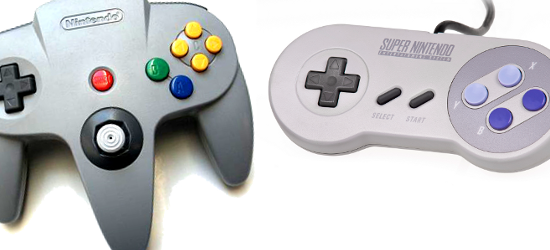
Why does it look like a Batarang?
In my retrospective on the SEGA Genesis controller, I threw some shade at the Nintendo 64’s trident. I said, “although that controller is highly unique, I think it’s safe to say it wasn’t the most intuitive experience to play with.” Although, I still believe the design has some flaws, I’ll admit that my short jab was hugely unfair. The N64 controller’s design was very strategic and actually does hold up in certain aspects to this day.
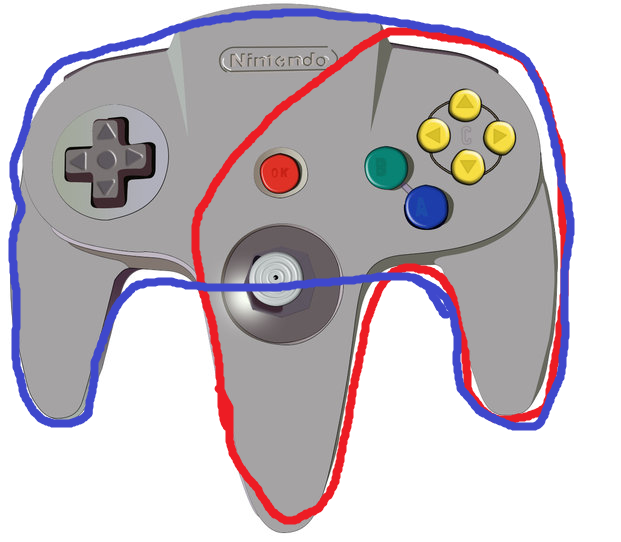
Because the N64 arrived at the dawn of 3D gaming, Nintendo felt compelled to create an innovative design to compliment the new trends. Unlike their competitors at the time, Nintendo believed using an analog stick would create the best experience for 3D games. While consoles used the joystick in the past for systems like the Atari 2600, mainstream gaming abandoned it for a while in favor of a D-pad.
Although directional pads are great for 2D videogames, Nintendo felt that it was an outdated tool for 3D games. Using an analog stick compliments the gameplay by allowing 360 degrees of motion. However, Nintendo also didn’t want to softly force developers into designing games based around the analog stick. They thought that some developers would continue producing 2D games due to the early stage of 3D games.
To bring together the best of both worlds, Nintendo designed a controller that was essentially two-in-one. The final result earned multiple humorous descriptions, ranging from a trident to a Batarang. However, the idea was for players to hold the controller differently depending on the type of game they were playing. For 2D side-scrolling titles, players would use the D-pad and grab the controller from the two far ends. Players would then shift their left hand to the analog stick on the middle prong for 3D games.
At least I C what they were going for.
3D games also brought another challenge: camera movement. The new ability for players to move freely in 360 degrees meant the camera could now get stuck at weird angles. Because modern consoles offer the solution of using a second analog stick, we often take this former challenge for granted. But we have to take ourselves out of the present and back into the 90s. Even the original PlayStation controller was a far cry from the DualShock we all know and love today.
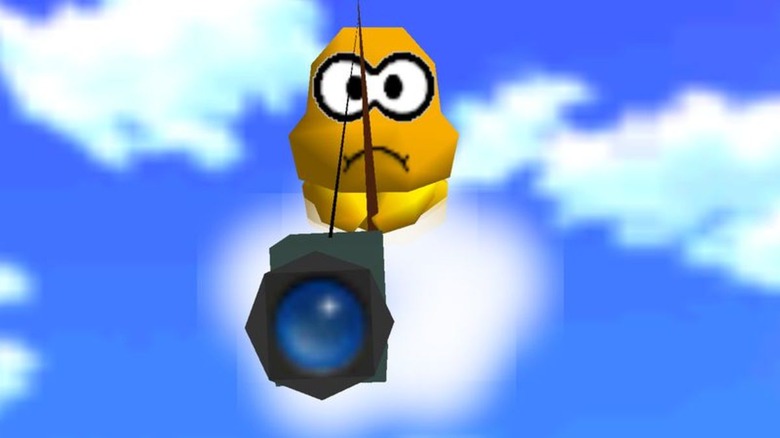
To combat this new challenge of camera movement, Nintendo incorporated a unique solution. The four yellow buttons on the right side of the controller, also known as the C-pad, had a variety of uses within the N64 catalogue. However, one primary use was camera movement.
Because Nintendo developed Super Mario 64 and the Nintendo 64 controller concurrently, that game provides a great example for the C-pad’s practical use. In that game, players can rotate the camera by using the left and right C buttons. By using the upwards C button, players can zoom in and look around. To zoom back out, players need to hit the downward C button. This method of camera control worked fine enough for its time. However, this control scheme feels extremely clunky by today’s standards.
Let’s get ready to rumble!
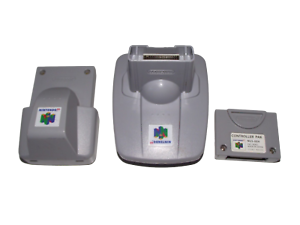
Rumble Pak, Transfer Pak, Controller Pak
Another interesting feature of the Nintendo 64 controller is the compatibility for add-ons. Throughout the console’s lifespan, Nintendo introduced various Paks that players could insert directly into the controller. One of the most famous was the Controller Pak. Although many games were able to save data directly on the cartridge, the Controller Pak was a memory card that offered an alternative way to save data. Because information saved on the game cartridge could not be transferred, Nintendo marketed it under the premise of exchanging game data with other players.
Another cool add-on was the Rumble Pak. It provided haptic feedback to gameplay using vibration. Although vibration in controllers is the status quo today, the Nintendo 64 was the very first console to include it. The highly innovative Rumble Pak originally launched alongside Star Fox 64. However, it was later sold separately as more games provided Rumble Pak support.
The Transfer Pak was also extremely innovative for its time. It allowed players to transfer data between the Nintendo 64 and the Game Boy or Game Boy Color. The Transfer Pak was originally included alongside Pokémon Stadium before it became available separately. However, Pokémon Stadium and its sequel were definitely the two most practical examples of the Transfer Pak in use. Players could use Pokémon they collected on the Game Boy and Game Boy Color games and battle them against friends on the Nintendo 64.
It’s just a little awkward…
Overall, the Nintendo 64 controller was both a product of its time and ahead of its time. The company wanted to do everything it could to bridge the gap between the 2D and 3D generations of gaming. In some ways, they succeeded. The incorporation of the analog stick was truly innovative and paved the way for how major companies would design future controllers to this day.
In addition, add-ons for the controller helped build an even more engaging gaming experience on the console. For the first time ever, players could receive vibration feedback while playing games using the Rumble Pak. Additionally, players could use a Transfer Pak to carry over data from their Game Boy games to the N64. And the Controller Pak made it simple to share game data with other people.
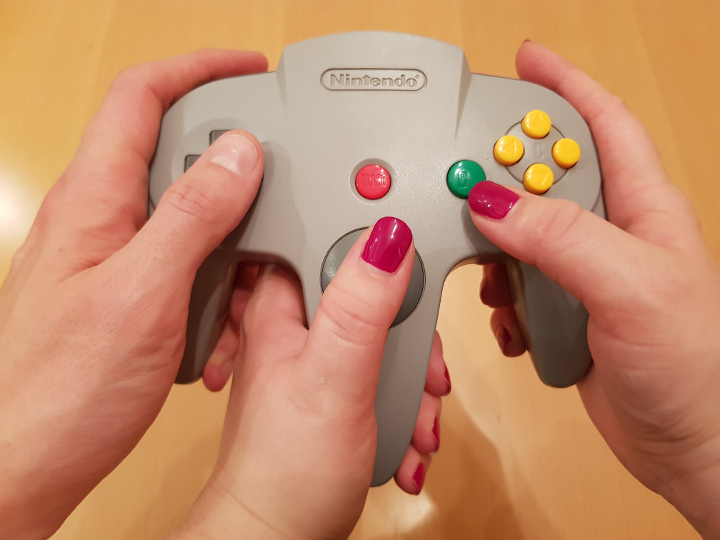
However, other aspects of the design are where the cracks begin to show. The concept of merging two controllers into one was great in theory but ran into several practical issues during its lifespan. One complication was that many developers didn’t stick to the intended layout. 3D games require numerous button inputs; therefore, games such as WWF No Mercy made use of as many buttons as possible.
Nintendo also severely underestimated the fast evolution in gaming. The care put forth to make producing 2D titles more accessible for developers was overshadowed by the abundance of 3D games. Sure, there are 2D classics like Yoshi’s Story and the original Super Smash Bros, but the majority of the catalogue is 3D.
3D games also tend to make use of more button inputs than 2D games. As a result, players more often than not had to shift their left hand frequently to hit the left bumper while playing games. This made the already awkward hand placement recommended for 3D gameplay even worse.
The legacy of the Nintendo 64 controller
However, even with all of its faults, the Nintendo 64 controller remains one of the most iconic controllers in history. Though I may be partially biased due to the console being my very first as a kid, you can’t deny that the unique look sets it apart from any other controller. Every aspect of that it is important to modern gaming. Even the clunky C-pad paved the way to inspire the use of dual analog sticks going forward.
The Nintendo 64 controller is a relic of gaming history. No matter how you feel personally about the design, you cannot understate its legacy. Nintendo’s trident controller is a symbol of the evolution of gaming in the 90s from 2D to 3D gameplay.

